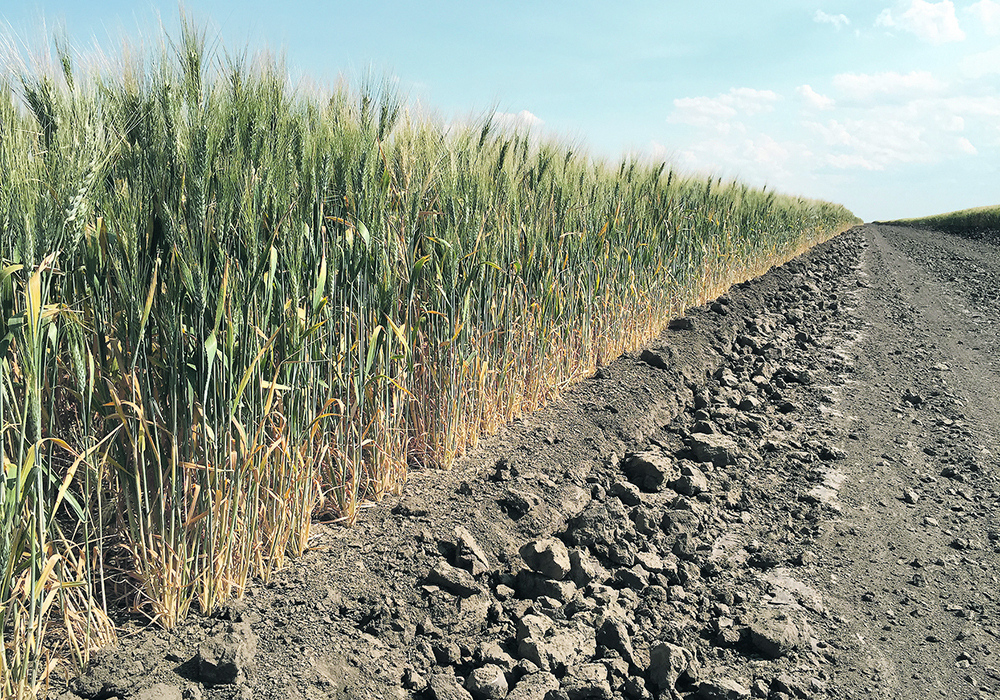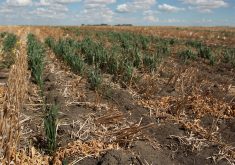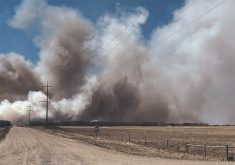Do you combine a durum crop with an estimated yield of only five bushels an acre? The answer would usually be no, but on the one field we have in durum, this year’s abnormal conditions have changed intentions.
Early in the growing season, the durum looked very good with even germination and good growth. Moisture was adequate to give it a strong start. It looked better than most of our other crops.
Then came the searing heat of the July long weekend. With moisture marginal by that juncture, the crop burned up. It would never recover.
Read Also

Proactive approach best bet with looming catastrophes
The Pan-Canadian Action Plan on African swine fever has been developed to avoid the worst case scenario — a total loss ofmarket access.
Like many crops, it always looked better from the road than when you walked into it — lots of heads, but many completely empty and many others with only a few kernels. With feed in such a terrible shortage for livestock producers, the plan was to let a neighbouring cattle producer fence and graze the field late this fall or early in the winter.
Crop insurance sent an adjuster and he agreed with my five bu. per acre estimate. With the low yield assessment changed from five to 10 bu. per acre for crops being used to feed livestock, pegging the exact yield wasn’t critical. For crop insurance payout purposes, a yield of zero would be used.
On the other hand, if we combined it, the harvested yield would be deducted from the crop insurance guarantee. Combining costs are in the range of $25 to $30 an acre. As well, scraping the ground is hard on the header and leaves no stubble to catch snow.
Besides, on such a stunted crop the kernels would no doubt be shrunken and shrivelled. The grade on the meagre production would probably be three, four or five. Better to let the neighbour get some feed value out of it to over- winter his cows.
Then durum prices exploded. On Aug. 19, a price of around $17 a bu. was being quoted. On Aug. 20, that abruptly increased to $20 for the top grade.
As well, reports from other farmers harvesting low-yielding durum indicated that most fields were grading number one. As well, samples downgraded to number two due to weight were often close enough that buyers would still pay the top price.
Harvested durum will reduce crop insurance by the same number of bushels, but the crop insurance price for durum is slightly less than $7 a bu.
Another consideration in my case is that the farm is enrolled in Global Ag Risk Solutions. For GARS, that five bu. per acre crop will be calculated as revenue whether or not we harvest it, thereby reducing our claim.
Overall, we can’t afford not to harvest the measly little durum crop. Maybe it won’t even yield the estimated five bu. an acre, but $20 a bushel is a huge incentive.
On our lentils, brown mustard, canaryseed and chickpeas, most of the yields are less than the production contracts with locked-in prices. Durum is the only crop not pre-priced and is therefore the only one on which we can benefit from the big price increase.
Many crops are seeing prices that can be described as astronomical. We’ve all seen prices in free fall when a market collapses. Seeing prices rocket upward is rare. How much upside is there? Will prices stabilize at some high level or will they come falling down as quickly as they increased?
In such an abnormal year, we should probably expect the unexpected.
Kevin Hursh is an agricultural journalist, consultant and farmer. He can be reached by e-mail at kevin@hursh.ca.
For more content related to drought management visit The Dry Times, where you can find a collection of stories from our family of publications as well as links to external resources to support your decisions through these difficult times.



















